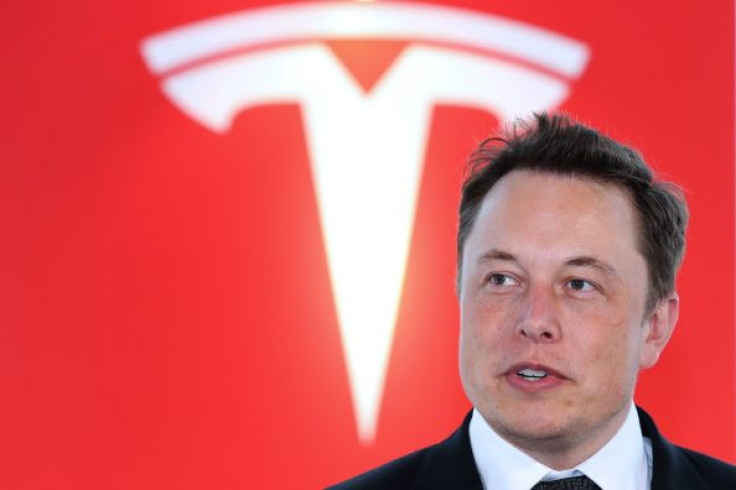Tesla Motors Inc (TSLA) Q4 Earnings: Look For Progress On Model X Deliveries, Model 3 Debut

Tesla Motors CEO Elon Musk has said on numerous occasions he welcomes competition in the electric vehicle market, so he should be thrilled with what's going on in the industry. With the world's largest automakers eyeing electrification and tinkering with the future of automotive technologies, Musk’s luxury electric car company is facing an increasingly crowded field.
Nearly every major car company has (or soon will have) at least one fully electric car. Those automakers range from German premium brands such as Mercedes-Benz, Porsche and Audi, to makers of lower-cost EVs, such as the 2017 Chevrolet Bolt and the 2018 Nissan Leaf, which are both expected to boast ranges of up to 200 miles per charge, well above the 80 to 90 miles current mass-produced EVs are providing.
With so much activity and interest from the major automakers, Tesla doesn’t have a lot of wiggle room for flubs or delays in its production and expansion schedules. The company has faced immense pressure from Wall Street to meet benchmarks and deadlines.
When the Palo Alto, California, automaker reports its fourth-quarter and full-year earnings results next week, Tesla-watchers should look for progress on Model X production and delivery pace to customers, many of whom made down payments years ago on the $80,000 seven-seater.
Also, Tesla should provide an important update on progress in the lower-priced sub-$40,000 Model 3 electric sedan, a crucial component to the company’s long-range plan to sell 500,000 cars a year by 2020, up tenfold from the current level. The world is expected to catch a first glimpse of the Model 3 in March, when pre-orders are expected to begin, but some think the unexpected slower pace of Model X deliveries could delay the release of the Model 3.
“Manufacturing and engineering challenges have delayed the [Model X] launch by at least one year and may have added hundreds of millions of dollars to costs while potentially losing some customers,” Adam Jonas, automotive analyst for Morgan Stanley, wrote in a research note Monday. “It is reasonable to assume that Tesla's technical resources have been diverted from other projects to ensure proper execution on X.”
Morgan Stanley currently expects Model X production challenges to delay the Model 3 by a year beyond Tesla’s own forecast, into late 2018. These are the kinds of delays that could adversely impact Tesla’s share price, which has lost 30 percent of its value since customers began receiving the Model X at a slower-than-expected pace.
Tesla Motors Inc. (NASDAQ:TSLA) will report fourth-quarter and full-year results after markets close Feb. 10. Analysts polled by Thomson Reuters expect the automaker to post a loss of $2.2 million and a gain of 2 cents per share, up from a losses of $107.6 million and 86 cents per share. Adjusted net income is expected to be $24.2 million, or 10 cents per share, up from a loss of $16.2 million or 13 cents per share. Revenue is expected to grow to $1.8 billion from $1.1 billion in the last three months of 2014.
One of the most important metrics for Tesla — besides sales and production numbers and gross profit margins — is its revenue growth. Much like another famous growth stock, Amazon.com, as long as the Tesla can keep reporting satisfactory revenue growth figures every quarter, and keep enough cash on hand, investors will ignore lack of profitability.
But Tesla’s widely tracked revenue figures come with a footnote.
Like many companies, Tesla engages in some accounting practices that don’t conform to generally accepted accounting principles, or GAAP. For example, it removes expenses related to stock-based compensation to its executives, a practice that’s become a sore issue among some accountants who say employee stock options should be counted as expenses.
Less common is for companies to report adjustments to revenue. Tesla uses two measures for its revenue, one required by GAAP rules and another that it prefers to use based on income from its leased vehicles, which come with a buyback guarantee. And through a relationship with US Bank and Wells Fargo, Tesla is booking the full value of its lease revenue, rather than the preferred GAAP measure of booking income from leased cars as payments are made. Some of Tesla’s revenue is based on the future resale value of post-lease cars.
Since most Tesla cars are leased, the difference between how Tesla reports lease revenue and how GAAP requires it is broad, and widening. In the third quarter the difference between GAAP and non-GAAP revenue was about $300 million, or 24 percent of the $1.24 billion in revenue Tesla reported in the three-months ending October.
© Copyright IBTimes 2024. All rights reserved.












